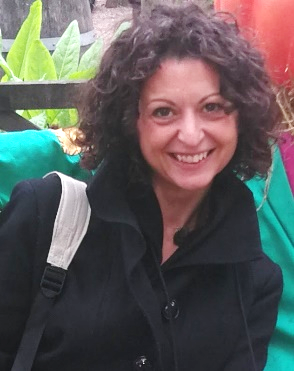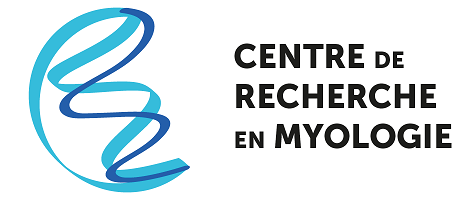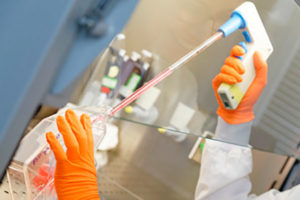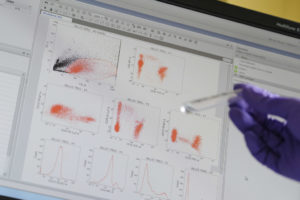Sestina Falcone
Tenured Researcher - INSERM

Présentation
My scientific career has been very varied and wide-ranging. During my PhD and post-doc in Milan (2000-2008) I worked on three main projects and several collaborative projects, ranging from the biology of the immune system to cellular metabolism. The analysis of the structure and metabolism of mitochondria in muscle cells using live imaging was the gateway that directed my interest towards the physiology and imaging of skeletal muscle and led me to join E.R. Gomes’ team (2008-2012), at the Institute of Myology, in Paris, and then France Piétri-Rouxel’s team (2013-present), within the same Institute. The studies carried out here using both fundamental and translational approaches have been of relevance to skeletal muscle physiology. Within the team, I have developed research focusing on a key aspect of muscle pathophysiology: the maintenance of mass.
In 2021 I obtained a permanent position as researcher at the French National Institute for Health and Medical Research (INSERM-Institut national pour la santé et la recherche médicale).
Through my work, we discovered that CAVβ1E is the upstream player that activates GDF5 signalling and that CAVβ1E /GDF5 is a fundamental axis for skeletal muscle maintenance during age-related muscle atrophy in mice and humans (Traoré et al, SciTranslMed 2019). Skeletal muscle atrophy exacerbates the morbidity and mortality of several pathologies. Identifying treatments that promote the maintenance of muscle size and contractility may be crucial for improving quality of life and optimising therapies for muscle diseases. In this context, we have shown that in age-related sarcopenia, a major public health problem, therapeutic approaches based on GDF5 are effective in maintaining muscle mass and function, as well as nerve-muscle connectivity (Traoré et al, Brain 2024). In addition, three patents have been filed, indicating that these treatments are beneficial in pathological and traumatic conditions affecting the neuromuscular system. Ongoing scientific projects are focused on elucidating the various molecular mechanisms underlying the biological effects observed and their importance in neuromuscular diseases.
Principales publications
- Vergnol, A, Traoré, M, Pietri-Rouxel, F, Falcone, S. New Insights in CaVβ Subunits: Role in the Regulation of Gene Expression and Cellular Homeostasis. Front Cell Dev Biol. 2022;10 :880441. doi: 10.3389/fcell.2022.880441. PubMed PMID:35465309 PubMed Central PMC9019481.
- Grassi, F, Falcone, S. Report and Abstracts of the 18th Meeting of the Interuniversity Institute of Myology: Virtual meeting, October 21-24, 2021. Eur J Transl Myol. 2021;31 (4):. doi: 10.4081/ejtm.2021.10270. PubMed PMID:34850623 PubMed Central PMC8758965.
- Gargaun, E, Falcone, S, Solé, G, Durigneux, J, Urtizberea, A, Cuisset, JM et al.. The lncRNA 44s2 Study Applicability to the Design of 45-55 Exon Skipping Therapeutic Strategy for DMD. Biomedicines. 2021;9 (2):. doi: 10.3390/biomedicines9020219. PubMed PMID:33672764 PubMed Central PMC7924625.
- Traoré, M, Gentil, C, Benedetto, C, Hogrel, JY, De la Grange, P, Cadot, B et al.. An embryonic CaVβ1 isoform promotes muscle mass maintenance via GDF5 signaling in adult mouse. Sci Transl Med. 2019;11 (517):. doi: 10.1126/scitranslmed.aaw1131. PubMed PMID:31694926 .
- Fongy, A, Falcone, S, Lainé, J, Prudhon, B, Martins-Bach, A, Bitoun, M et al.. Nuclear defects in skeletal muscle from a Dynamin 2-linked centronuclear myopathy mouse model. Sci Rep. 2019;9 (1):1580. doi: 10.1038/s41598-018-38184-0. PubMed PMID:30733559 PubMed Central PMC6367339.
- Pimentel, MR, Falcone, S, Cadot, B, Gomes, ER. In Vitro Differentiation of Mature Myofibers for Live Imaging. J Vis Exp. 2017; (119):. doi: 10.3791/55141. PubMed PMID:28117796 PubMed Central PMC5408763.
- Gentil, C, Le Guiner, C, Falcone, S, Hogrel, JY, Peccate, C, Lorain, S et al.. Dystrophin Threshold Level Necessary for Normalization of Neuronal Nitric Oxide Synthase, Inducible Nitric Oxide Synthase, and Ryanodine Receptor-Calcium Release Channel Type 1 Nitrosylation in Golden Retriever Muscular Dystrophy Dystrophinopathy. Hum Gene Ther. 2016;27 (9):712-26. doi: 10.1089/hum.2016.041. PubMed PMID:27279388 .
- Falcone, S, Roman, W, Hnia, K, Gache, V, Didier, N, Lainé, J et al.. N-WASP is required for Amphiphysin-2/BIN1-dependent nuclear positioning and triad organization in skeletal muscle and is involved in the pathophysiology of centronuclear myopathy. EMBO Mol Med. 2014;6 (11):1455-75. doi: 10.15252/emmm.201404436. PubMed PMID:25262827 PubMed Central PMC4237471.
- Cadot, B, Gache, V, Vasyutina, E, Falcone, S, Birchmeier, C, Gomes, ER et al.. Nuclear movement during myotube formation is microtubule and dynein dependent and is regulated by Cdc42, Par6 and Par3. EMBO Rep. 2012;13 (8):741-9. doi: 10.1038/embor.2012.89. PubMed PMID:22732842 PubMed Central PMC3410389.





